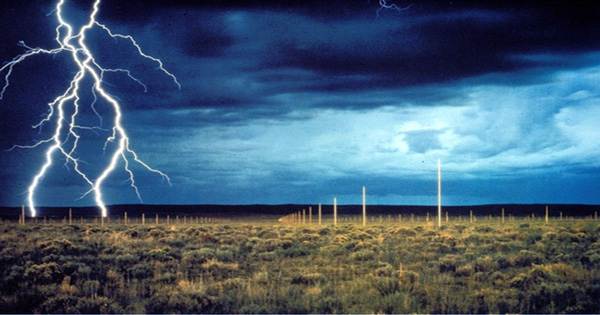The US National Weather Service has shared an incredible video from Green Bay Wisconsin, where a particularly unfortunate pine tree was extinct because of lightning and it split in two.
Video why taking shelter under a tree in lightning conditions is a terrifying idea, and it is better to stay far away from the longest objects in the region. The video was originally shared WLUK-TV Fox 11 and arrived on the morning of April 9 from Wautoma High School in Wisconsin.
It is not clear why someone was filming the tree with the moment before the lightning struck, as the movement suggests a person holding a camera instead of a security or stationary camera but the incredible footage makes us feel happy that they were. Luckily, there were no injuries to the rogue Bolt, so the high school left with an educational experience about the severity of this epic weather event. Thus, as the National Weather Service reiterated: “When the thunder roars inside the house”.
Devices used to capture wildlife using camera traps, motion sensors are protecting the animal from bushmeat predators and looking for rare animals in the process. According to Gizmodo, researchers in the West African country of Togo first spotted a miniature African deer species called Walter’s Duiker in the wild.
A rare species of earthwork and a mongoose were discovering in Togo using camera traps. “Camera traps are game changers when it comes to working in the field of biodiversity surveys,” Neil D’Cruze, a wildlife biologist at Oxford University, told Gizmodo. “I spent a week in the tropical forest without any large mammal species. Yet when you patiently light the laptop from the camera traps and stick to the memory card during the whole trip and see the species and the species present with you the whole time – it is like giving a glimpse of a parallel world.”
For bushmeat hunters, specialize in wildlife collection for rural populations, their services, considered illegal and a habit of over-hunting, no longer require their biologists to collect data. Some bush hunters killed rare animals to sell their rare carcasses in the market. Walter’s Duke was discovering in 2010 when bushmeat specimens compared to other known Duke specimens. However, Walter’s recent portraits of the duo are the first scientists. Very rare, some rare species do not make endangered lists because the International Union for Conservation of Nature classifies them as “data-deficient”.












